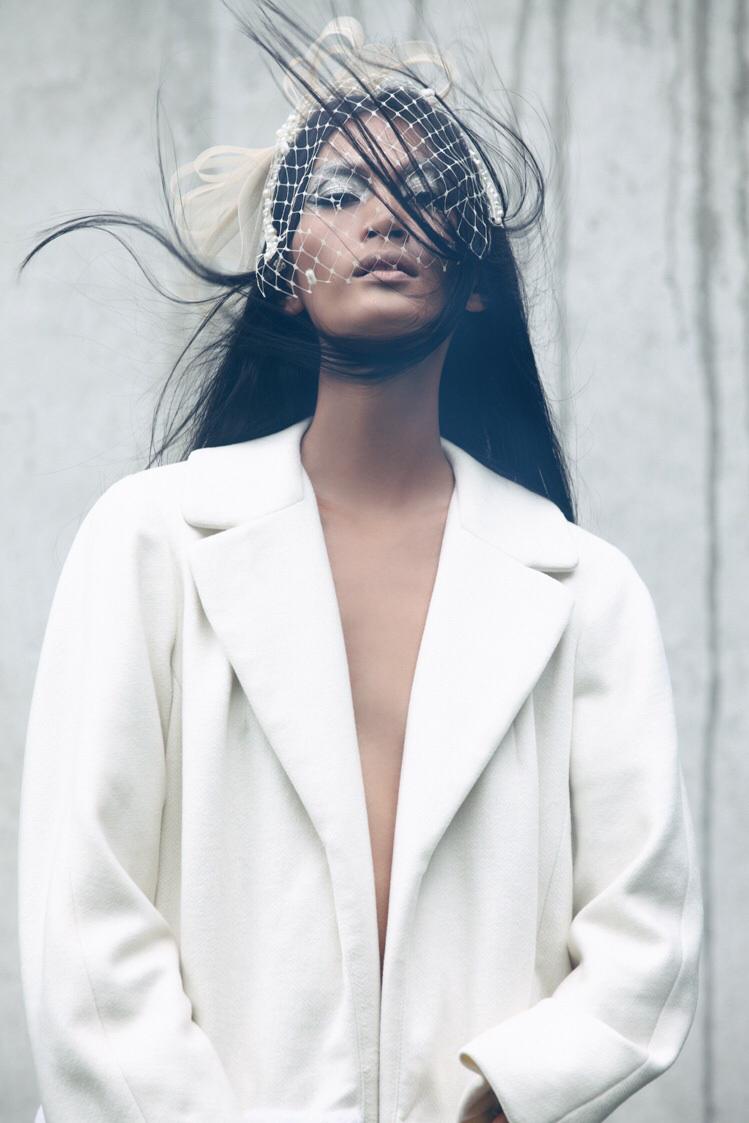How I make it as model: Advina Ratnaningsih
With fashion coming and going, models also experience the same fate. Surviving a decade in the modelling industry is considered a blessing. Staying on top is another challenge. One of Indonesian senior models, Advina Ratnaningsih, has been in the industry for 14 years. “My catwalk and photoshoot jobs used to be balance in numbers. Nowadays my job consists mostly of catwalk,” said the model.
Advina started her modelling career at Elite Model Look in 1999. After the competition, she didn’t immediately plunge into the modelling world. Instead, she returned to her hometown and finished school. Her career was put on hold until she moved to Jakarta to pursue her study at Universitas Indonesia.
“I didn’t know anyone in the industry when I started. I slowly built my connections,” said the Purwokerto born model. Her modelling journey started from modelling school. “I was trained by Ivan Gunawan. He was just starting his career. His uncle, Adjie Notonegoro, signed me as his model for two years.”
Advina began active modelling in 2005. She was signed by F&G Models, B Management, and currently Wynn Models. She doesn’t show any sign of quitting modelling any time soon. While many models retire and have family at their early thirties, Advina landed a contract from Sari Ayu as a brand ambassador. If it wasn’t impressive enough, the model is always gracing the runway for top designers’ show during fashion week.
The key to long lasting career, in Advina’s book, requires commitment, confidence, and brain to nail the job. “Everyone thinks modelling is an easy job,” said the 33-year-old model. The simplest case, she explained, is practicing runway blocking for a show. While the task might be as simple as walk and pose, she has seen a lot of models missed the mark. Then there is attitude that a model needs to be aware of. “You’d be surprised at models who actually told the designer they didn’t feel beautiful in the clothes they’re assigned to,” said Advina. “It is our job to wear and present the clothes.”
The fashion industry itself went through a major transformation according to Advina’s observation. From the props a model have to bring to diversity issue. “Back then, I had to bring black, white, gold, silver, and nude high heels. We had to bring luggage to fashion week. It’s simpler these days. I only have to bring black or nude shows. Make-up is also more natural,” said the model.
As a dark skin model, Advina has experienced being cancelled on several occasions due to her skin tone. “I think because it’s a bridal shoot. Clients usually sign fair skin models for bridal gown.” Indeed. Indonesian has a penchant with fair skin. There’s a mindset going around with some brands that employing white model makes the brand more international. “You could count dark skin models with one hand back in the days. But now, there are models with dark skin and curly hair,” she said.
Advina also believes that Indonesia has to embrace different body types. “Not everyone is as tall or as skinny as us. Most of the clothes are tailored to model but doesn’t guarantee they look good on people,” said Advina who is not immune to body image. “I have to go on diet before fashion week because our body will be measured.”
On the downside, models are exposed to safety risks on their jobs. “A few years ago, I had to wear 20 cm high heels made of steel. A lot of my peers cried backstage because they couldn’t walk in the heels. Who’s going to take responsibility when we fall off the stage? Maybe the designer or the organiser will compensate us but how are we going to do our job afterwards?”
That includes mistreatment of models. Agencies don’t have much power unless there is a written contract. “Clients could hold the payment for weeks, even months. Freelance models are at a bigger risk. At least for me, I have my agency to negotiate and follow up with clients,” the model shared.
Surprisingly, compared to Europe and the US, ageism in Indonesian modelling industry is not as extreme, according to Advina. “When I was signed by a modelling agency in Milan, I was told to lie about my age. I had to tell the designers I was 23 when I went on casting. That was 6 years off my actual age,” said the model. Indonesian designers, on the other hand, prefer models with substantial experience.
“Here, the longer you have been in the industry, the more trust a designer puts in you. You don’t even have to join casting. When I was in Milan, I had to join every casting no matter what. Every model goes through the same process. There were 20 models standing in the cold queuing for casting,” she recounted.
“In contrast, it’s not about age in Indonesia. It comes down to the budget,” said Advina. Agencies have set different budget for senior models. It affects the shows senior models book. “The shows I book nowadays mostly come from established designers because smaller brands with limited budget would rather go for younger models who fit within their budget.”
That being said, it is possible to model at 40 but you’ll most likely be a muse to a designer. Advina has even branched out from her modelling work to sponsored content on her social media handle. “Couple years ago, social media isn’t part of the judging criteria. Now, social media presence is important. I remember a form for a fashion week that asks how many followers you have on Instagram.”
Sure, with social media, everyone can pose and claim the title. But what makes a model truly a model, as Advina sumps it up, “A model has to have character. Be yourself. Don’t bleach your skin even if the society pressures you to. With character, the clothes you wear will stand out more.”





